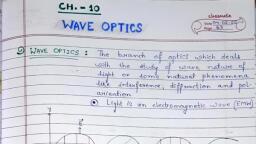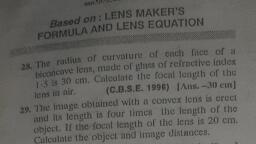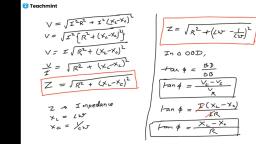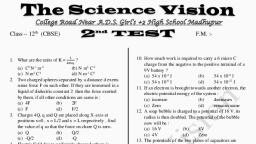Question 2 :
A force acts on a body of mass 3 kg such that its velocity changes from 4 m $s^{-1}$ to 10 m $s^{-1}$.Calculate the change in the momentum of the body.
Question 3 :
A boy pushes a wall with a force of $10 N$ towards east. What force is exerted by the wall on the boy?
Question 5 :
The earth pulls a stone downwards due to gravity. The stone exerts:<br/>
Question 6 :
Sir Isaac Newton's third law of motion is called the action-reaction law. Which of the following statements appropriately describes the action-reaction forces?
Question 7 :
Two balls A and B of masses $m$ and $2m$ are in motion with velocities $2v$ and $v$ respectively. What is the ratio of their momentum ?<br><br>
Question 8 :
Match the elements of the List-I to the elements of List-II.<br/><table class="wysiwyg-table"><tbody><tr><td>List - I</td><td>List - II</td></tr><tr><td>a) static friction</td><td>e) less friction</td></tr><tr><td>b) angle of repose</td><td>f) self-adjusting force</td></tr><tr><td>c) lubrication</td><td>g) non-conservative force</td></tr><tr><td>d) frictional force</td><td>h) angle of friction</td></tr></tbody></table>
Question 9 :
Assertion (A): According to Newton’s third law sum of action and reaction is not equal to zero Reason (R) : The forces action and reaction acts on different bodies.
Question 10 :
In which of the following cases the net force is not equal to zero?
Question 11 :
A certain particle undergoes erratic motion. At every point in its motion, the direction of the particle's momentum is always
Question 13 :
If a force of $250 N$ acts on a body, the momentum required is $125 Kg $m/s. The period for which the force acts on the body is
Question 15 :
A car of mass 1000 kg moves on a circular path with a constant speed of 16 m/s .It is turned by ${ 90 }^{ \circ }$ after traveling 628 m on the side . the centripetal force acting on the car is -<br><br>
Question 16 :
A force on an object that is perpendicular to a common contact surface is called<br>
Question 18 :
A body of mass M collides with a wall with velocity V and rebounds with the same speed. Its change in momentum is equal to :<br/>
Question 19 :
Assertion: According to Newton's third law, the sum of action and reaction forces on a body is equal to zero.
Reason: The action and reaction forces act on different bodies.
Question 20 :
A body P has mass 2 m and velocity 5 v. Another body Q has mass 8 m and velocity 1.25 v. Find out the ratio of momentum of P and Q.<br/>










































